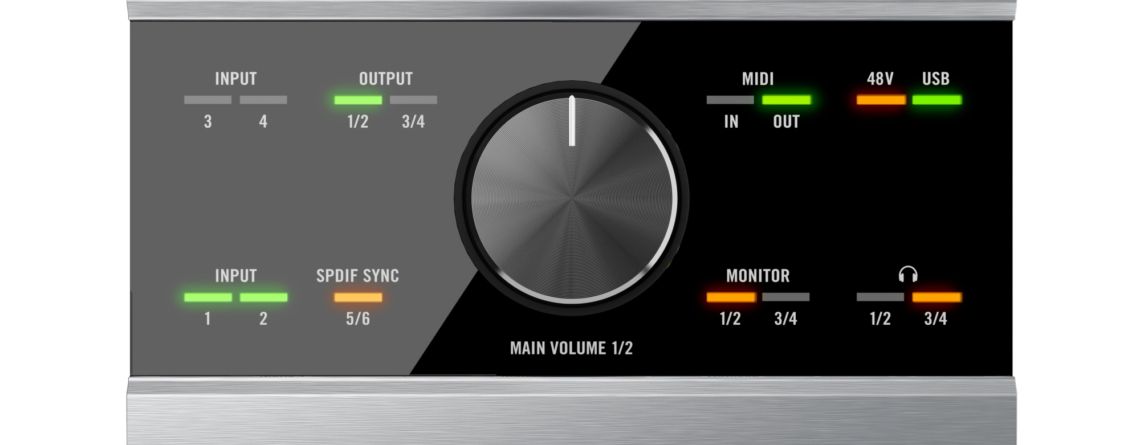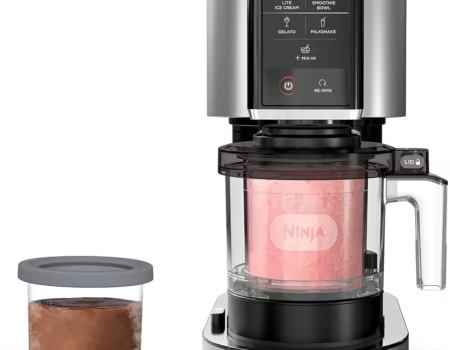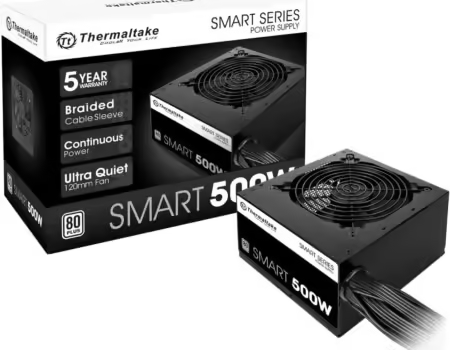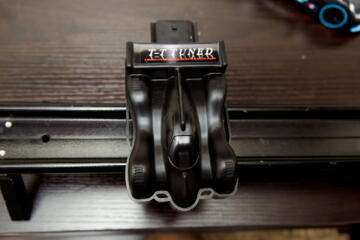The Komplete Audio 6 makes my DAW Happy!
Komplete Audio 6
| Recently I decided that I wanted to start making my own background music. This was a side effect of an issue I ran into with a couple of my tutorial videos on YouTube. If you’re not familiar with creating content for the internet or in general, you may not understand the issue of royalties. I found this out the hard way when one of the videos I posted online was flagged by YouTube’s copyright algorithm, even though the background music I used in the video was considered “Royalty Free” under the creative commons license it was distributed under. The only options I had were to pull the video and lose the views I already had, remove the offending audio or use one of the generic YouTube background tracks that everyone including myself hates. I chose to remove the audio which pretty much ruined my video but was the best option in my opinion. This event and others are what led me to get into the “Music Production” business and the reason I’m reviewing this interface today.
My Dilemma

This interface was purchased as a replacement for a buggy Tascam US366. I originally wanted the Arturia Audiofuse but this was not available at the time and also just a teeny bit out of my price range. Actually, I would have probably never purchased that interface so let me stop fooling myself. It does look good though and if it ever goes on sale it may become an option. Due to where the interface is positioned in my setup I needed one with a nice big volume knob at the top. This was one of the main reasons I chose the KA6 and its predecessors which included the aforementioned US366 and a very consumer oriented Soundblaster Pro 5.1 USB. I’m going, to be honest, the Soundblaster line of USB soundcards have been some of the best that I have used as far as low latency ASIO performance goes. The typical drawbacks with consumer level devices are a lack of balanced connections and non-standard sample rates.
Enter the Dojo Native Instruments Komplete Audio 6. This interface hails from a company known more for its slick software and plugins, with hardware only seeming to play second fiddle to its virtual offerings. Don’t get me wrong, NI gear is top notch. I mean you should expect nothing less from a company that helped pioneer one of the main tools used by the digital DJ crowd today and I’m not talking about the “sync” button. In order to show how well designed this device is, I have to reluctantly compare it to the one it displaced from my setup.
The Hunt
Recently I was in the market for a “real” Audio Interface to replace my SoundBlaster Pro USB 5.1. I needed to do this because even though the SB was perfect for what I was doing it did not provide the proper sample rates for music production. I probably could have used it since 48khz is the correct format for video but I needed more options in case I wanted to try other things in the future. The US366 was right up my alley, it was very similar to the Audiofuse in design and I knew that Tascam was a  quality brand since I already owned a few of their recorders. I made one critical mistake, though, and that was ignoring the reviews about the performance of the device. Let’s just say that usually, when people review a product they typically have a good idea of how it performs. Learn from my mistake, don’t ignore the reviews (good or bad).
quality brand since I already owned a few of their recorders. I made one critical mistake, though, and that was ignoring the reviews about the performance of the device. Let’s just say that usually, when people review a product they typically have a good idea of how it performs. Learn from my mistake, don’t ignore the reviews (good or bad).
After a number of crashes, lockups, glitches, stutters and, of course, noisy loopback interference I was done. I decided to start searching for a new interface, thankfully it didn’t take long. The Komplete Audio 6, though old, still holds its ground against some of the better pro level interfaces out there. It, as the name suggests has 6 inputs and outputs similar to the US366 it replaced. It is also made out of Aluminum and plastic like the Tascam but unlike the US366, the KA6 features a build quality that can only be described as industrial. The thing is a tank, I mean its feels like they took a solid block of aluminum and machined out some openings for the circuitry and then slapped some commercial grade plastic slabs on the side. Trust me, this thing seems that it could survive a Nuclear Blast although I’m not too sure I want to test that theory.
Performance

Compared to the US366 the KA6 is a bit inferior spec wise. It features 4analog inputs/outputs of which 2 are unbalanced, 2 digital (SPIDF) and 2 MIDI connections just in case you have any non-USB devices in your arsenal. It does lack the higher sample rate of the US366, the optical connections, the dedicated mixer and also HUI controls but it makes up for all of that with its stellar performance or should I say reliability. Since I swapped the two devices my DAW (Presonus Studio One) has performed flawlessly. No more audio glitches or freezing and most of all the annoying EMI type interference/nasty buzzing sound is gone, My ears are happy again. YESS! The Komplete Audio 6 features a Cirrus Logic chipset which seems to contribute to the audio quality and stability of the device. The two front facing inputs have independent gain controls and there are separate controls for the built-in “direct monitoring” of outputs 1 thru 4. You can also find a 1/4 inch headphone jack which has the ability to switch between outputs 1&2 or 3&4. On the rear of the device, you will find three pairs of inputs and outputs and a button to turn phantom power on and off. Detailed specs of the interface are included below for all the tech geeks like myself out there.
Conclusion
Overall I’m liking the KA6. The build quality is top notch and my faith in German engineering is telling me that I won’t be let down by its performance. I didn’t mention the included software since I already had all the included software but it’s a pretty good selection especially if this is your first purchase for your workstation. You get Komplete Elements MK2, Cubase LE and Traktor LE. Elements alone is a $50 purchase so that could be an incentive. I chose this device since it is a proven platform and although its design is over 5 years old it was already way ahead of its time, so I expect nothing but greatness and with NI’s track record I have no doubt my expectations will be met. For more info check out the official Komplete Audio 6 page here.
If you liked this review, please support our site by clicking the image below to purchase your own Komplete Audio 6
Specifications
SYSTEM REQUIREMENTS
Mac OS X 10.9, 10.10 or 10.11.1 (latest update), Intel Core 2 Duo
Windows 7, Windows 8, or Windows 10 (latest Service Pack, 32/64-bit), Intel Core 2 Duo or AMD AthlonTM 64 X2
4 GB RAM (6 GB recommended for large KONTAKT Instruments)
SUPPORTED DRIVERS
ASIO
Core Audio
DirectSound
WASAPI
DIMENSIONS
2″ (52 mm) x 6.3″ (159 mm) x 4.8″ (122 mm), 1.9lb (850 grams)
GENERAL
Monitor with 1024 x 768 screen resolution, USB 2.0, DVD drive
HARDWARE CHARACTERISTICS
Audio Converters
A/D Channels,
D/A Channels 4, 4
Sample Rates 44.1, 48, 88.2, 96 kHz
Bit Resolution 16, 24 Bit
Inputs 1/2
(A/D-D/A to Output*) Line Instrument Mic
Input Impedance
44 kOhm, balanced 1 MOhm, unbalanced 3.4 kOhm, balanced
Full-Scale Input Level @ max. Gain -4 dBu -9.7 dBu -36 dBu
Maximum Input Level +14.3 dBu +8.4 dBu 0 dBu
Gain -inf … +15 dB -inf … +21 dB +11 dB … +47 dB
Dynamic Range @ Unity Gain 98.3 dB (A) 98.3 dB (A) 98.0 dB (A)
THD+N (Full-Scale Level, Unity Gain) 0.013 % 0.013 % 0.013 %
Frequency Response(96 kHz), -1 dB 13 Hz – 42 kHz 12 Hz – 42 kHz 13 Hz – 45 kHz
Equivalent Input Noise @ Max. Gain — — -127.5 dBu (A)
Inputs 3/4
(A/D-D/A toOutput*)
Input Impedance
44 kOhm, balanced
Full-Scale Input Level +12 dBu
Gain -1 dB
Dynamic Range 98.5 dB (A)
THD+N (Full-Scale Level) 0.013 %
Frequency Response (96 kHz), -1 dB 12 Hz – 43 kHz
Line Outputs (D/A)
Full Scale Output Level @ Max. Volume +11 dBu
Dynamic Range @ Max. Volume 102 dB (A)
THD+N 1/2: 0.01%, 3/4: 0.02%
Frequency Response (96 kHz), -1 dB 10 Hz – 45 kHz
Headphone Output
Maximum Output Level (High Impedance) +12 dBu, 3.0 Vrms
Maximum Output Power 20 mW @ 100 Ohms, 11 mW @ 33 Ohms
Dynamic Range 102 dB (A)
THD+N @ Max Level, 100 Ohms 0.014%
Frequency Response (96 kHz), -1 dB 9 Hz – 45 kHz
Digital I/O 2 channels (5/6), SPDIF in/out, coaxial
Gallery
Discover more from Akiatech Solutions Blog
Subscribe to get the latest posts sent to your email.












